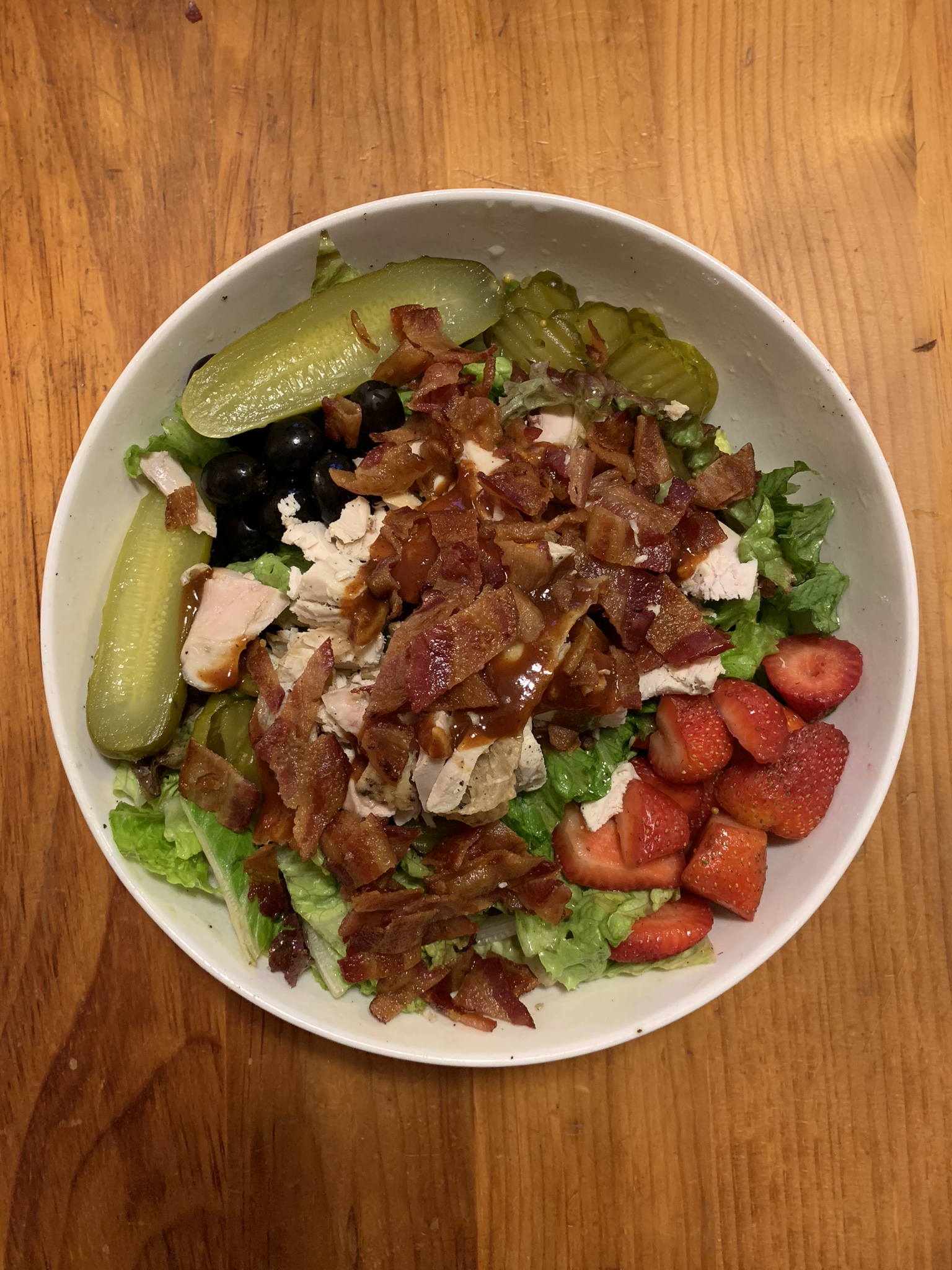
We all hear that processed meats can be healthy. These meats are high in sodium, saturated oils, and artificial sweeteners. These substances are extremely unhealthy, and they have no nutritional value. Also, they can contain chemicals, such as artificial flavorings, sweeteners, and preservatives. These ingredients are known to be bad for the body.
The USDA recommends that you eat ground meat within two days of purchase or freeze it. Ground meat may contain bacteria that could be mixed throughout, causing food poisoning and other illnesses. While you might be tempted to eat ground beef right away, this is not the best idea. The bacteria can multiply and grow in your food, making it more dangerous to ingest. Be sure to thoroughly cook your meat before you serve it.
Low-fat foods should not be eaten. These foods often contain unhealthy ingredients such as added sugars, vegetable oil, and artificial preservatives. These products can mimic the full-fat versions but lack taste and nutritional value. Natural sweeteners are better. They are safe and don't contain calories. These are safe and healthy, but you should not eat processed or fast food.

Processed meats are often laden with sodium, and other additives. High-fructose, corn syrup, for instance, has a high concentration of sugar. It is also loaded with nitrates, which have been linked to a higher risk of cancer. Pasteurization has also killed the good bacteria found in milk. The extra calories and fats are not worth it.
You can eat raw apples but they are not good for you. The peels and skins of these fruits are tough to digest. They are high in potassium, but should not be consumed raw. Avocados taste best when eaten as a pure fruit. These fruits and veggies are like candy bars for your body. They should not be eaten raw. You should eat them cooked.
Pretzels make up a popular midtown snack in New York City. Cara Walsh, a nutritionist, warns that these carbs can be high in sugar and contain no nutrients. People tend to eat too many of these carbs, which can lead to increased health risks. They are also not a good food for the health. However, it can be a great source of calories.
There are many foods you should never eat. The sodium and fat in processed meats is high. These foods can cause blood vessel damage if consumed in excess. You should avoid processed meats and prepackaged meals. They are high on sodium and contain sugars, preservatives, and preservatives. They can be very unhealthy, whether frozen or not. These meals are high in calories and can be over-processed.

Processed meats are also known to be unhealthy and should be avoided. They can be high in sugar, transfats, and other harmful ingredients that are linked to many diseases. Selecting 100% organic meat is a good option. This is recommended for people who have certain health concerns. There are many vegetables and fruits that you can enjoy, but it is best to avoid them.
Hot dogs are not recommended. They can contain dyed meats, as well as artificial flavors and colors. Pickled feet made from chopped hooves are soaked and preserved in brine. Chitlins can be described as deep-fried intestines from pigs. Spam is a delicacy that's made of pork bits encased in gelatin. This is not the only reason you shouldn’t eat Spam.
Fried foods are dangerous. They are high in saturated fat and sodium. It's better to stick with natural foods. Flavored and low-quality foods can be dangerous. The wrong food choices can lead to weight gain and pressure on the joints. Sugar and salt are the two most commonly cited culprits. Despite the appearance of fried or processed foods, they are very bad for the health.
FAQ
What is the difference of a virus from a bacteria?
A virus is a microscopic organism that cannot reproduce outside its host cell. A bacterium can be described as a single-celled organism which reproduces by splitting in two. Viruses are very small (about 20 nanometers) while bacteria are larger (up to 1 micron).
Viruses are often spread through contact of infected bodily fluids like saliva, urine or semen. Bacteria can easily be spread from direct contact to contaminated surfaces and objects.
Viruses may enter the body through cuts, scrapes. bites, or any other break in the skin. They can also penetrate the skin through the eyes, nose or mouth.
Bacteria can be introduced to our bodies by cuts, scrapes or burns. They can also get into our bodies via food, water or soil.
Both bacteria and viruses cause illness. But viruses do not have the ability to multiply within their hosts. They can only infect living cells and cause illness.
Bacteria can multiply within their hosts and cause illness. They can spread to other parts of our bodies. That's why we need antibiotics to kill them.
How often should i exercise?
For a healthy lifestyle, exercise is vital. There is no set time limit for exercising. Finding something you enjoy is key. Stick with it.
You should aim to do 20-30 minutes of moderate intensity exercise three times per week. Moderate intensity means that your muscles will continue to work hard even after you finish. This type of workout burns around 300 calories.
Walking is a great option if you are a keen walker. You can do 10-minute walks four days per week. Walking is low-impact and easy on the joints.
Jogging three times a week for 15 mins is enough if you want to run. Running can help you burn calories and to tone your muscles.
If you're not used to exercising, start slowly. Begin by only doing 5 minutes of cardio five times per week. Gradually increase the time you do cardio until your goal is reached.
Do I need calories to count?
You might wonder, "What's the best diet for me?" or "is counting calories necessary?" This depends on your health and lifestyle.
The Best Diet for me - Which One Is Right for You?
My current health status, personal goals, preferences, and overall lifestyle all play a role in choosing the right diet. There are many diets out there, some good and some bad. Some diets work better than others. What can I do to make the right choice? How can I make the right choice?
These are the questions this article will answer. It begins with an overview of the different diets today. After that, you will learn about the pros and disadvantages of each type. Then, we will discuss which diet is the best.
Let's start by taking a look at the various types of diets.
Diet Types
There are three types of diets available: ketogenic, high-protein, and low fat. Let's talk about them briefly.
Low Fat Diets
A low fat diet means a diet that reduces the intake of fats. This is done through reducing the intake of saturated fats (butter, cream cheese, etc.) These fats can be replaced with unsaturated fats like avocados and olive oil. Low fat diets are often recommended to those who wish to lose weight quickly. However, this kind of diet may cause problems such as constipation, heartburn, and indigestion. If a person doesn’t receive enough vitamins from their foods, this can lead to vitamin deficiency.
High Protein Diets
High-protein diets limit carbohydrates and favor proteins. These diets are more protein-rich than others. They are meant to help build muscle mass and burn more calories. They may not be able to provide sufficient nutrition for people who need it. Also, they tend to be very restrictive, so they aren't suitable for everyone.
Ketogenic Diets
Also known as keto diets, ketogenic diets are also called keto diets. They are high fat and moderately carbohydrate and protein-rich. They are typically used by athletes and bodybuilders because they allow them to train harder and longer without getting tired. You must adhere to all side effects, including fatigue, headaches, nausea and headaches.
What is the best way to eat?
The best diet for you depends on several factors, like your age, gender, weight, health conditions, and lifestyle habits. You also need to consider how much energy you expend during exercise, whether you prefer low-calorie foods, and if you enjoy eating fruits and vegetables.
Intermittent Fasting is an alternative to traditional fasting if you are looking to lose weight. Intermittent eating means that you only eat specific meals throughout the day. This is in contrast to three large meals. This method may work better than traditional diets which include daily calorie counts.
Intermittent fasting is believed to increase insulin sensitivity. It may also reduce inflammation. This may lead to a decrease in diabetes risk and blood sugar levels. Some research also suggests that intermittent fasting might promote fat loss, and improve overall body composition.
Exercise: Good and bad for immunity?
Your immune system is strengthened by exercise. When you exercise, your body produces white blood cells which fight off infections. Your body also gets rid of toxins. Exercise helps prevent diseases like cancer and heart disease. Exercise can help reduce stress.
Exercising too frequently can make your immune system weaker. If you work out too hard, your muscles become sore. This causes inflammation, swelling, and can even lead to death. Your body will then produce more antibodies in order to fight infections. This can lead to allergic reactions and other autoimmune disorders.
So, don't overdo it!
What can you do if your immune system is weak?
There are trillions upon trillions on cells in the human body. Each cell is responsible for creating organs and tissues with specific functions. When one cell dies, another cell replaces it. Hormones, which are chemical signals that allow cells to communicate with one another, enable them to do so. Hormones control all bodily functions, including growth, development, metabolism, immunity and immune system.
Hormones are chemical substances that glands secrete throughout the body. They are chemicals that travel through the bloodstream and function as messengers to control how our bodies work. Some hormones are made internally, while others are created outside the body.
The hormone-producing glands release their contents into bloodstream. This is when hormone production starts. Once released, hormones move through the body until they reach their target organ. Sometimes hormones stay active for only a short time. Other hormones stay active longer and continue to influence the body's functioning even after they leave the bloodstream.
Some hormones are produced in large quantities. Some hormones are produced in large quantities.
Some hormones are produced at certain times during life. The production of estrogen can occur during puberty and pregnancy, as well as menopause and old age. Estrogen is important for women to develop breasts and maintain bone density. It also helps prevent osteoporosis. It promotes hair growth as well as keeping skin soft and smooth.
What are 10 healthy habits you can adopt?
-
Get breakfast every morning.
-
Don't skip meals.
-
Keep a balanced diet.
-
Get lots of water.
-
Take care your body.
-
Get enough rest.
-
Avoid junk food.
-
Get at least one form of exercise each day.
-
Have fun
-
Meet new people.
Statistics
- Extra virgin olive oil may benefit heart health, as people who consume it have a lower risk for dying from heart attacks and strokes according to some evidence (57Trusted Source (healthline.com)
- WHO recommends consuming less than 5% of total energy intake for additional health benefits. (who.int)
- In both adults and children, the intake of free sugars should be reduced to less than 10% of total energy intake. (who.int)
- The Dietary Guidelines for Americans recommend keeping added sugar intake below 10% of your daily calorie intake, while the World Health Organization recommends slashing added sugars to 5% or less of your daily calories for optimal health (59Trusted (healthline.com)
External Links
How To
What does the word "vitamin" mean?
Vitamins are organic substances found naturally in food. Vitamins are necessary for us to absorb nutrients in the foods we consume. Vitamins cannot come from the body so food must provide them.
There are two types vitamins: water soluble or fat soluble. Water-soluble vitamins dissolve easily when they are dissolved in water. These include vitamin C (thiamine), Vitamin B1 (riboflavin), Vitamin B2 (riboflavin), Vitamin B3 (niacin), Vitamin B6 (pyridoxine), Vitamin C, B1 (thiamine), Vitamin B2 (riboflavin), Vitamin B3 (niacin), and Vitamin B6 (pyridoxine). Fat soluble vitamins are stored in the liver and fatty tissue. Vitamin D, E, K and A are some examples.
Vitamins can be classified by their biological activity. There are eight major types of vitamins:
-
A - Vital for normal growth and maintaining good health.
-
C - important for proper nerve function and energy production.
-
D - Essential for healthy teeth and bones.
-
E is necessary for good vision, reproduction.
-
K - essential for healthy muscles, nerves, and bones.
-
P - vital for building strong bones andteeth.
-
Q - Aids digestion and iron absorption
-
R - Required for red blood cell production
The recommended daily allowance (RDA), for vitamins, varies depending upon age, gender, or physical condition. The U.S. Food and Drug Administration, (FDA), sets the RDA value.
For adults over 19, the RDA for vitaminA is 400 micrograms per daily. Because it is essential for the development of the fetus, pregnant women should consume 600 micrograms per daily. Children ages 1-8 require 900 micrograms per day. Children under 1 year old require 700 micrograms daily, while infants over one year old need 500 micrograms every day. This decreases between 9 and 12 months.
Children between the ages of 1-18 need 800 micrograms per daily for obesity, while children overweight require 1000 micrograms. Children underweight or obese will need 1200 mg per day.
Children between 4 and 8 years old with anemia will need 2200 micrograms daily of vitamin C.
2000 micrograms per person is necessary for general health. Women who are pregnant or breastfeeding need 3000 micrograms per day due to increased nutrient requirements.
Adults over 70 require 1500 micrograms each day, since they lose around 10% of their muscle mass every decade.
Women who are pregnant and lactating need more nutrients than the RDA. Pregnant mothers need 4000 micrograms per daily during pregnancy and 2500 after giving birth. Breastfeeding moms need 5000 micrograms each day when breastmilk production occurs.